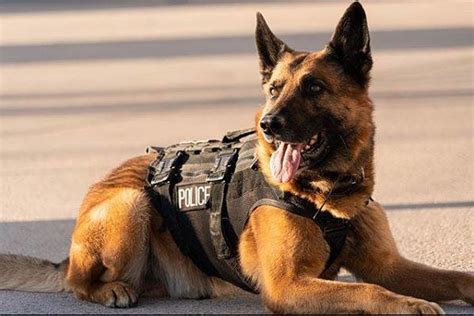Explore the history and characteristics of police dog breeds like German Shepherds, Belgian Malinois, and Labrador Retrievers. Learn about their role in law enforcement.
History of police dog breeds
The history of police dog breeds dates back to ancient times, with evidence of dogs being used in law enforcement as far back as the 4th century BC. The ancient Greeks and Romans were known to use dogs for tracking and guarding, making them one of the earliest recorded instances of police dogs. These early breeds were often large and strong, capable of intimidating and apprehending suspects.
As the role of police dogs evolved over the centuries, so too did the breeds used in law enforcement. The rise of modern policing in the 19th century saw the development of specialized breeds for specific tasks, such as tracking, search and rescue, and apprehension. German Shepherds, Belgian Malinois, and Dutch Shepherds became popular choices for police work due to their intelligence, loyalty, and strong work ethic.
Today, the history of police dog breeds is marked by the continued evolution of training and breeding techniques to produce the ideal K-9 partner for law enforcement. The diverse roles and responsibilities of police dogs have led to the use of a wide range of breeds, each selected for their unique abilities and traits. From Labrador Retrievers to other lesser-known breeds, the history of police dog breeds reflects the ongoing effort to ensure the effectiveness and success of K-9 units in law enforcement.
Characteristics of ideal police dogs
When it comes to selecting the ideal police dog for law enforcement work, certain characteristics are essential. Police dogs need to be highly intelligent, obedient, and adaptable to various situations. They also need to have a strong sense of smell, excellent physical agility, and a high level of energy. In addition, they must be courageous, confident, and possess a strong protective instinct. Furthermore, good communication skills with their handlers and the ability to work well in a team are crucial for police dogs.
Another important characteristic of an ideal police dog is its trainability. Police dogs must be able to learn and retain complex commands quickly and efficiently. This requires a high level of focus and a strong desire to please their handlers. They also need to be able to perform under pressure and remain calm in high-stress situations. Moreover, a good police dog should have a natural drive to work and possess a strong work ethic.
It is also essential for police dogs to have a strong bond with their handlers. Trust and loyalty are key factors in the relationship between a police dog and its handler. This bond is crucial for effective communication and teamwork, as well as for the overall well-being and success of the police K-9 unit. Overall, the ideal police dog should possess a combination of physical, mental, and behavioral characteristics that make them well-suited for the demanding and critical role of law enforcement work.
German Shepherds in law enforcement
German Shepherds in law enforcement
German Shepherds have a long history of serving in law enforcement. Their intelligence, loyalty, and versatile abilities make them one of the most popular breeds for police work. They are known for their confident and fearless nature, making them excellent for tasks such as search and rescue, narcotics detection, and apprehending suspects.
One of the key characteristics of German Shepherds that make them ideal for law enforcement is their high trainability. They are quick learners and can easily understand and execute complex commands. This makes them valuable assets in various law enforcement operations, as they can adapt to new tasks and environments with ease.
In addition to their physical and mental prowess, German Shepherds also have a strong sense of loyalty and protective instinct. They form close bonds with their handlers and are willing to put themselves in harm’s way to ensure the safety of their human partners. This makes them invaluable companions in the line of duty, as they can be relied upon to stay focused and determined in high-pressure situations.
Belgian Malinois in police work
Belgian Malinois are renowned for their role in law enforcement and are often considered one of the top breeds for police work. With their strong and agile build, high intelligence, and intense drive, the Belgian Malinois is well-suited for a variety of tasks in law enforcement.
These dogs are often used in police work for a range of duties, including tracking, search and rescue, apprehension of suspects, and detection of narcotics or explosives. Their keen sense of smell and focused demeanor make them valuable assets to law enforcement agencies around the world.
In addition to their physical and mental capabilities, Belgian Malinois are also highly trainable and have a strong bond with their handlers. This combination of traits makes them an ideal choice for police work, as they are able to follow commands quickly and accurately, while also remaining focused and determined in high-pressure situations.
Labrador Retrievers as police K-9s
Labrador Retrievers as police K-9s
Labrador Retrievers as police K-9s are one of the most commonly used breeds in law enforcement. Their friendly and gentle nature makes them excellent candidates for police work, as they can easily transition between being a loyal family pet and a highly skilled working dog. Labradors are known for their intelligence, trainability, and strong scenting abilities, making them valuable assets in tasks such as detection work, search and rescue operations, and narcotics detection. Their high energy levels and natural athleticism also make them well-suited for physically demanding activities required in law enforcement.
Labrador Retrievers are often used as police K-9s due to their exceptional tracking and retrieving skills. Their keen sense of smell and determination make them highly effective in locating missing persons, evidence, or contraband. These dogs are also known for their obedience, making them reliable partners for their handlers in various law enforcement operations. Their intelligence and willingness to learn makes them adaptable to various training methods, and they are often trained to respond to commands quickly and accurately.
In addition to their strong working abilities, Labrador Retrievers are known for their friendly and sociable nature, making them highly popular among law enforcement agencies and their communities. Their approachable demeanor often helps in diffusing tense situations, as they can provide comfort and support to individuals in distress. Their versatility in both working and public relations roles makes them valuable assets in community policing efforts, as they can help in building positive relationships between law enforcement agencies and the communities they serve.
Role of Dutch Shepherds in law enforcement
When it comes to law enforcement, Dutch Shepherds play a crucial role in various tasks. Known for their intelligence, agility, and strong work ethic, these dogs are highly valued in police work. They are often used in tasks such as search and rescue, tracking, apprehension of suspects, and detection of narcotics and explosives.
One of the key characteristics of Dutch Shepherds that make them suitable for law enforcement is their strong sense of smell. Their powerful olfactory abilities allow them to effectively track and locate missing persons, criminals, and contraband. In addition to their exceptional sense of smell, Dutch Shepherds are also highly trainable, making them reliable partners for police officers in the field.
Furthermore, Dutch Shepherds are known for their versatility and adaptability. These dogs are able to excel in a wide range of environments and situations, making them valuable assets in the fight against crime. Whether working in urban or rural settings, Dutch Shepherds are able to perform their duties with precision and focus, making them indispensable members of law enforcement teams.
Other breeds used in police work
When it comes to police work, most people immediately think of German Shepherds, Belgian Malinois, and Labrador Retrievers. However, there are several other breeds that are also commonly used in law enforcement. One such breed is the Rottweiler. Known for their immense strength and protective nature, Rottweilers make excellent police dogs. Their loyalty and fearlessness make them well-suited for the demands of police work.
Another breed commonly used in police work is the Doberman Pinscher. Dobermans are known for their intelligence, obedience, and agility, making them ideal for tasks such as tracking and apprehension. With their sharp instincts and high energy levels, Dobermans are valued for their ability to perform under pressure in potentially dangerous situations.
Additionally, the Dutch Shepherd is another breed that is frequently utilized in law enforcement. With their keen sense of smell and exceptional trainability, Dutch Shepherds excel in roles such as narcotics detection and search and rescue. Their versatility and strong work ethic make them valuable assets to police forces around the world.
Frequently Asked Questions
What are some of the top dog breeds used in law enforcement?
Some of the top dog breeds used in law enforcement include German Shepherds, Belgian Malinois, and Labrador Retrievers.
What makes German Shepherds suitable for police work?
German Shepherds are known for their intelligence, strength, and loyalty, making them well-suited for various police tasks such as patrol work, search and rescue, and drug detection.
Why are Belgian Malinois popular among law enforcement agencies?
Belgian Malinois are popular for police work due to their agility, high energy levels, and excellent work ethic. They are often used in tasks such as apprehension and bomb detection.
What role do Labrador Retrievers play in law enforcement?
Labrador Retrievers are commonly used as detection dogs, particularly in sniffing out narcotics and explosives. Their friendly and gentle temperament also makes them suitable for public interaction.
Are other breeds aside from German Shepherds, Belgian Malinois, and Labrador Retrievers used in police work?
Yes, other breeds such as Dutch Shepherds, Rottweilers, and Bloodhounds are also utilized in various law enforcement agencies for tasks ranging from tracking and apprehension to search and rescue.
What are some key characteristics that make a dog suitable for police work?
Some key characteristics include intelligence, trainability, physical strength and stamina, courage, loyalty, and a strong work ethic. These traits are essential for dogs to perform effectively in law enforcement roles.
How are police dogs trained for their roles in law enforcement?
Police dogs undergo rigorous training that includes obedience, scent detection, tracking, search and rescue, apprehension, and agility. They often work closely with their handlers to develop and maintain their skills.





